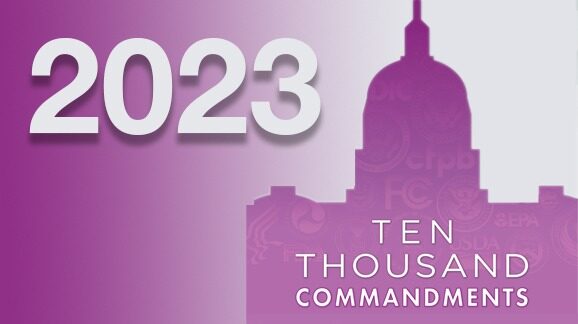Chapter 3: Getting Beyond a Federal Regulatory Budget and the Limitations of Administrative Reform
Federal programs are funded either by taxes or by borrowing, with interest, from future tax collections. When Congress spends, no one questions that disclosure is necessary for voters to hold representatives accountable. Taxpayers can observe those decisions during the authorization and appropriations processes. They can inspect the costs of programs and agencies in Congressional Budget Office publications and in the federal budget’s historical tables. Disclosure for spending exists, however difficult it may be to access specific information.
Regulation and spending are mechanisms by which governments act or compel. Rather than taxing and paying directly, Congress often “funds” objectives with federal regulation to compel the private sector, as well as state and local governments, to bear the costs of federal initiatives. Regulation in such instances functions as an off-budget form of taxation and spending. The costs and economic effects of regulatory compliance are not budgeted and disclosed the way federal spending is, so regulatory initiatives can commandeer private-sector resources with relatively little public controversy.
Policymakers may find it easier to impose regulatory costs that have less disclosure and accountability than traditional spending programs. When regulatory compliance costs prove burdensome, Congress can escape accountability by blaming an agency for issuing an unpopular rule.
Although disclosure of spending obviously does not stop deficits and debt, it is still vital for making progress toward those ends. Likewise, policymakers should disclose regulatory costs to the fullest extent possible so that the decision of whether to regulate can at least have an opportunity to get the full consideration it deserves.
Table 1 provides an overview of the 2022 federal regulatory enterprise to be discussed in the following pages.
Table 1. The Regulatory State: An Overview for 2023
